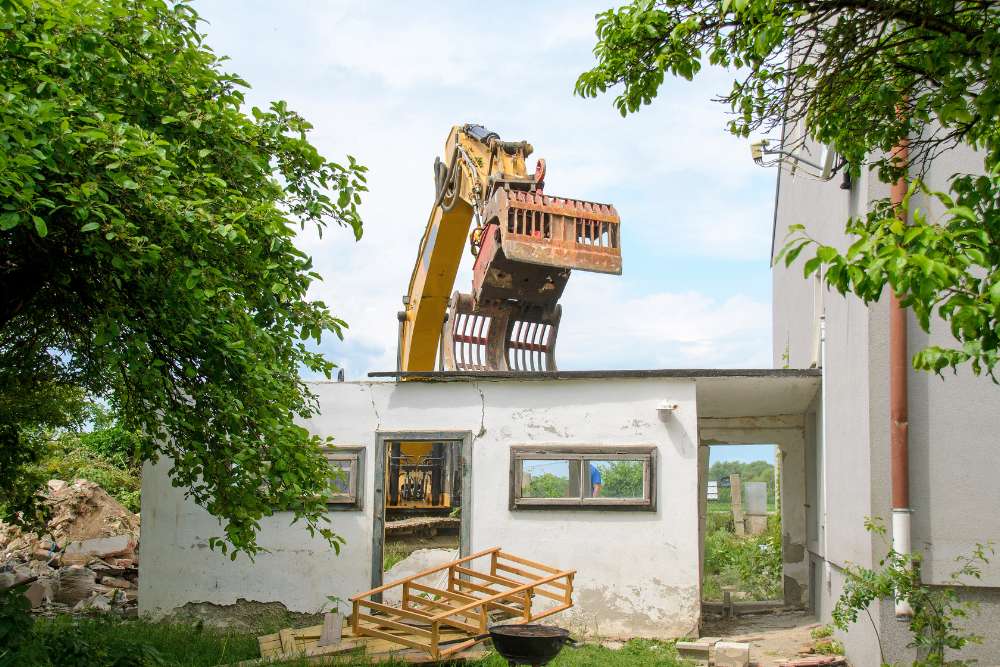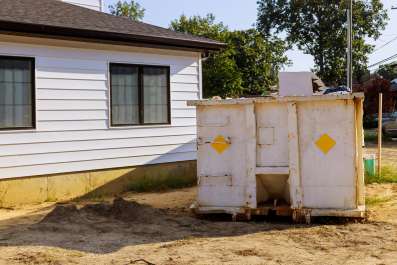
Safe Practices for Playset Removal
September 4, 2025
How Kitchen Demolition Services Save You Time and Money
September 4, 2025Planning Your Demolition
Embarking on a shed demolition project without a solid plan is akin to setting sail without a map. A well-thought-out strategy not only ensures safety but also streamlines the entire process. Begin by assessing the shed’s structure—understanding its materials, size, and condition will guide your approach. For instance, a wooden shed may require different tools and techniques compared to a metal one. Additionally, check local regulations to determine if a permit is necessary for demolition. This proactive step can save you from potential legal hassles down the road.
Equally important is organizing your demolition timeline. Allocate specific days for each phase—emptying the shed, dismantling components, and cleaning up. This segmentation helps in managing tasks efficiently and reduces the risk of overlooking crucial steps. Remember, a haphazard approach can lead to unnecessary delays and complications. By setting clear objectives and adhering to a structured plan, you’ll navigate the demolition process with greater ease and confidence.
Safety First
Safety isn’t just a precaution; it’s the cornerstone of any demolition project. Before lifting a hammer or unscrewing a bolt, equip yourself with the necessary protective gear. Hard hats, gloves, safety goggles, and sturdy footwear are non-negotiable. These items shield you from potential hazards like falling debris, sharp edges, and heavy lifting injuries. It’s also wise to have a first aid kit on hand, ensuring immediate response to any minor injuries.
Beyond personal protective equipment, consider the safety of the surrounding environment. Clear the demolition area of any obstacles that might impede movement or pose tripping hazards. Inform family members or neighbors about the ongoing project to prevent accidental interference. By fostering a secure work environment, you not only protect yourself but also those around you, ensuring a smooth and incident-free demolition process.
Sorting Materials for Disposal
Effective waste management begins with proper sorting. As you dismantle your shed, categorize materials into distinct groups: wood, metal, plastic, and hazardous waste. This segregation facilitates recycling and ensures that each material is disposed of in accordance with local regulations. For example, metals can often be recycled, reducing environmental impact and potentially earning you some extra cash. Conversely, hazardous materials like asbestos or lead-based paints require special handling and disposal methods to prevent contamination.
Implementing a sorting system also aids in organizing your cleanup efforts. Designate specific containers or areas for each material type, making the disposal process more efficient. This foresight can significantly reduce the time spent on cleanup and minimize the risk of mixing incompatible materials. In essence, thoughtful sorting not only supports environmental sustainability but also streamlines the entire demolition and disposal process.

Renting a Dumpster
Renting a dumpster is a practical solution for managing demolition debris, especially when dealing with large volumes of waste. Before selecting a dumpster, assess the amount and type of materials you’ll be disposing of. This evaluation ensures you choose a container that’s appropriately sized and suitable for the waste at hand. Overestimating or underestimating your needs can lead to additional costs or insufficient space.
Once you’ve secured the right dumpster, place it strategically near the demolition site to minimize the distance debris needs to be transported. Be mindful of local regulations regarding dumpster placement—ensure it’s positioned legally to avoid fines. After the demolition is complete, fill the dumpster systematically, adhering to weight limits and material restrictions. Properly utilizing a rented dumpster not only simplifies waste removal but also contributes to a more organized and efficient demolition process.
Recycling and Reusing Materials
Embracing recycling and reuse during shed demolition offers both environmental and economic benefits. Start by salvaging materials that are still in good condition. Wooden planks, metal sheets, and even hardware like nails and screws can be repurposed for future projects, reducing the need for new materials. This practice not only conserves resources but also saves you money on purchasing new supplies.
Beyond personal use, consider donating reusable items to local charities or community organizations. Items like doors, windows, and shelving units can find new life in other settings, benefiting those in need. Additionally, many recycling centers accept construction materials, ensuring that even materials you can’t reuse are processed responsibly. By prioritizing recycling and reuse, you contribute to a circular economy and minimize the environmental footprint of your demolition project.
Handling Hazardous Materials
Encountering hazardous materials during shed demolition requires immediate attention and careful handling. Materials such as asbestos, lead paint, and certain chemicals pose significant health risks if not managed properly. Before beginning demolition, inspect the shed for any signs of these substances. If identified, consult local environmental agencies or professionals specializing in hazardous waste removal for guidance on safe handling and disposal.
It’s crucial to avoid disturbing these materials during demolition, as this can release harmful particles into the air. If removal is necessary, employ appropriate containment methods and protective equipment to minimize exposure. Additionally, be aware of local regulations governing the disposal of hazardous materials—failure to comply can result in legal penalties. By taking proactive measures and seeking expert advice, you ensure both your safety and environmental protection during the demolition process.
Hiring Professional Services
Opting for professional demolition services can alleviate the complexities associated with shed removal. Experienced contractors possess the necessary tools, expertise, and manpower to execute the demolition efficiently and safely. They can also assist in obtaining required permits and ensuring compliance with local regulations, streamlining the entire process.
Professional services often include debris removal and proper disposal, saving you time and effort. Moreover, they can identify and manage hazardous materials appropriately, mitigating health and environmental risks. While hiring professionals incurs additional costs, the benefits of a hassle-free and compliant demolition process often outweigh the expense. When selecting a service provider, ensure they are licensed, insured, and have a proven track record to guarantee quality and reliability.
Post-Demolition Cleanup
The work doesn’t end once the shed is down; thorough cleanup is essential to restore your property. Begin by removing all debris, including nails, screws, and broken pieces of wood, which can pose safety hazards. Sweep the area to collect smaller fragments and dispose of them properly. If the shed was on a concrete slab, inspect the surface for any damage or remaining materials that need attention.
Next, assess the surrounding landscape. If the demolition has left behind uneven ground or disturbed soil, consider leveling the area and reseeding the lawn if necessary. This not only improves the aesthetics of your yard but also prevents erosion and promotes healthy grass growth. A meticulous post-demolition cleanup ensures your property is safe, functional, and ready for future use.
Environmental Considerations
Being mindful of environmental impacts during shed demolition is paramount. Aim to minimize waste by recycling as much material as possible. Wood, metal, and certain plastics can often be repurposed or recycled, reducing the amount sent to landfills. Additionally, consider the energy consumption of your demolition process—opt for manual tools when feasible to decrease carbon emissions associated with power equipment.
It’s also beneficial to explore eco-friendly disposal options. Some areas offer specialized facilities for construction and demolition waste, ensuring materials are processed sustainably. By integrating these practices into your demolition plan, you contribute to environmental conservation and promote sustainable living within your community.
Conclusion
Embarking on a shed demolition project necessitates meticulous planning, safety precautions, and responsible waste management. By assessing the shed’s structure, obtaining necessary permits, and organizing the demolition process, you lay the groundwork for a successful project. Sorting materials for recycling, handling hazardous substances with care, and considering professional services can further streamline the process and mitigate risks.
Post-demolition, a thorough cleanup and attention to environmental considerations ensure your property remains safe and aesthetically pleasing. Whether opting for a DIY approach or hiring professionals, the key lies in preparation and adherence to best practices. For residents in Santa Rosa, CA, seeking assistance with junk removal, North Bay Junk Removal offers expert services to handle your needs efficiently. Reach out at 707-478-6817 to learn more about their offerings and schedule a consultation.




